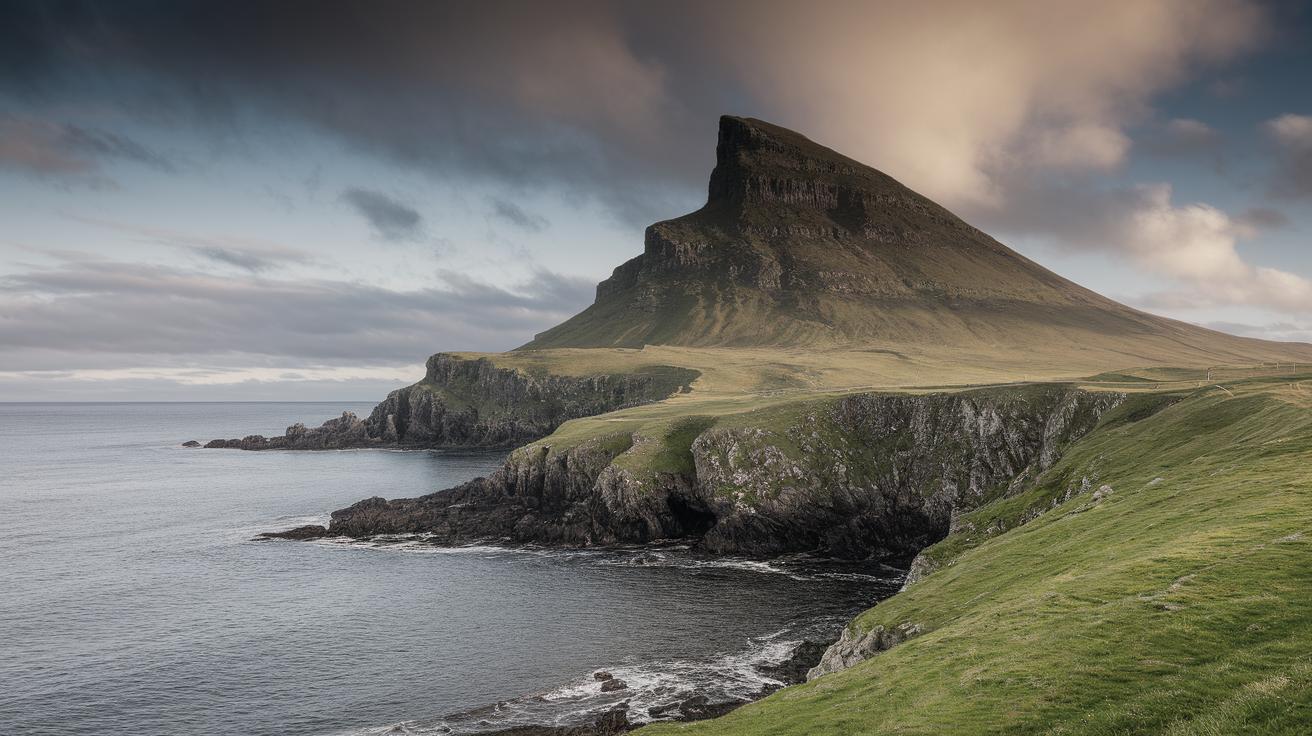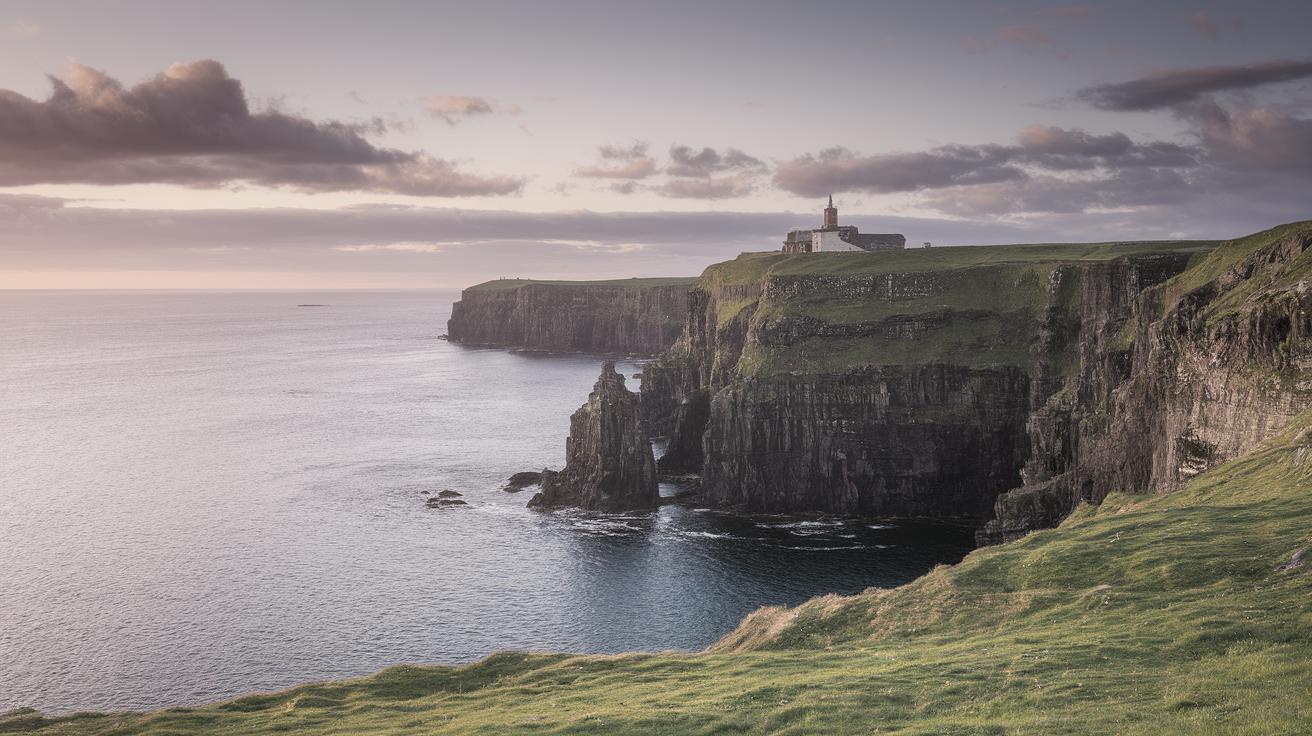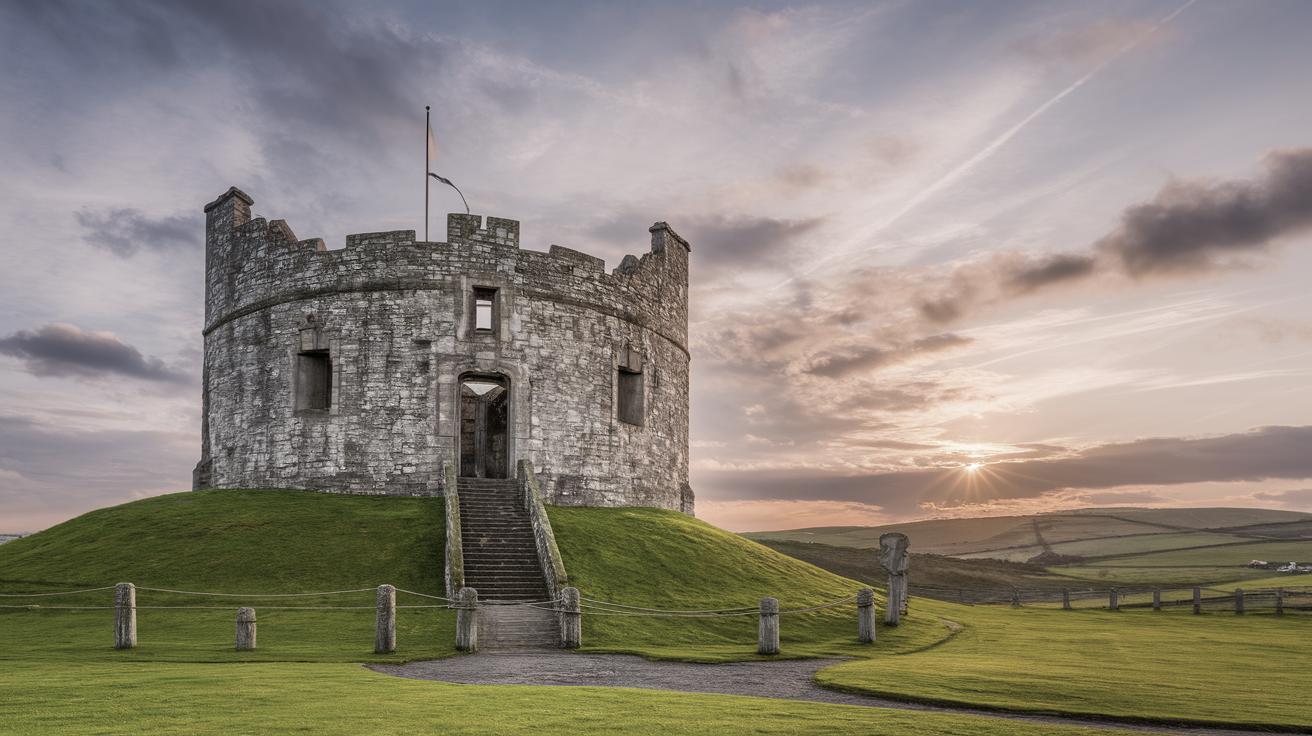Famous Legends and Myths of Ireland
Ireland has long been a land rich in folklore, with a vibrant tapestry of myths and legends passed down through generations. These stories, steeped in mysticism, heroism, and tragedy, reveal the cultural and historical roots of the Irish people. In this blog post, we explore some of the most famous Irish myths and legends, from the enchanting tale of Tír na nÓg to the ominous cry of the Banshee. Each story offers a glimpse into the Celtic psyche and the values that have guided the Irish throughout history. We will also examine the four cycles of Celtic mythology that categorize these tales, providing a structured understanding of Ireland’s mythic landscape.
Ancient Irish Mythology Stories, Tales, and Legends
1. Fionn Mac Cumhaill and the Giant’s Causeway
Fionn Mac Cumhaill, often anglicized as Finn McCool, is one of the most legendary figures in Irish mythology. Renowned for his strength and wisdom, he is the central character of many tales. One of the most famous stories is his creation of the Giant’s Causeway, a geological wonder on the Antrim coast of Northern Ireland. According to legend, Fionn built the causeway to confront the Scottish giant Benandonner. The story unfolds with humor and cunning, ultimately portraying Fionn not just as a brute warrior but a clever hero.
The Giant’s Causeway is a UNESCO World Heritage Site, famously associated with this legend. It comprises thousands of interlocking basalt columns, the result of an ancient volcanic eruption, but the myth highlights the Irish talent for threading narrative magic into natural phenomena. This tale remains a testament to the imaginative flair of Irish storytelling.
2. The Banshee
The Banshee, or Bean Sidhe in Irish, is a harbinger of death and its mournful wail has long been associated with impending doom. Described as a spectral woman, the Banshee is said to appear when someone in the family is about to pass away. Her chilling cries are said to echo across the countryside, a haunting lamentation that is highly feared.
Despite her ominous message, the Banshee is not considered malevolent. Instead, she is perceived as a messenger of the Otherworld, reflecting the Celtic belief in a mystical existence beyond the mortal realm. The stories surrounding the Banshee showcase the blend of fear and reverence the Irish hold for supernatural elements.
3. The Salmon of Knowledge
A central story in Irish mythology is that of the Salmon of Knowledge. According to legend, the salmon gained all the world’s knowledge by eating the nine hazelnuts that fell into the Well of Wisdom. Fionn Mac Cumhaill, as a young boy, inadvertently acquired this knowledge by tasting the salmon’s juices while cooking it for the druid Finegas.
This tale underscores the theme of wisdom in Irish folklore, illustrating that true knowledge often comes unexpectedly. Fionn’s accidental gain of wisdom is symbolic of the transformative power of nature, a recurring motif in Celtic tales where knowledge and nature are intricately linked.
4. The Cattle Raid of Cooley
The epic ‘Táin Bó Cúailnge’, translated as The Cattle Raid of Cooley, is a cornerstone of the Ulster Cycle. This legendary saga tells of the fierce battle sparked by Queen Medb of Connacht’s desire to possess the brown bull of Cooley. The hero Cú Chulainn, single-handedly defending Ulster against Connacht’s armies, embodies the quintessential Celtic warrior.
The tale is a rich tapestry of intrigue, highlighting themes of honor, greed, and heroism. It provides insight into ancient Irish society, where cattle were seen as symbols of wealth and power. The narrative also emphasizes the physical and martial prowess revered by the Celts.
5. The Children of Lir
A poignant story of transformation and loss, the Children of Lir is a tale of four siblings turned into swans by their jealous stepmother. Cursed to remain swans for 900 years, their heartbreaking journey across Irish waters is one filled with longing and endurance.
Ultimately, the Children of Lir regain their human forms upon hearing the bell of St. Patrick. This legendary narrative carries themes of redemption and hope and reflects Irish spirituality blended with pre-Christian and Christian elements.
6. The Puca
The Puca is a mythical shape-shifter in Irish folklore, capable of assuming a variety of terrifying or enchanting forms. Often depicted as a dark horse, the Puca is both feared and respected for its ability to bring both good fortune and chaos.
This trickster figure underscores the unpredictability inherent in the world, a common theme in Irish myths. The Puca’s ambiguous nature illustrates the duality found in many Celtic tales, where characters often embody both benevolent and malevolent traits.
7. The Pursuit of Diarmuid and Grainne
A legendary tale of romance and pursuit, the story of Diarmuid and Grainne is a tragic tale of love and betrayal. Grainne, betrothed to the aging Fionn Mac Cumhaill, falls deeply in love with the handsome young warrior Diarmuid. The two flee together, pursued relentlessly by Fionn and his warriors.
This narrative explores themes of love, loyalty, and the honor code among warriors. Ultimately, it highlights the inevitability of fate and the complexities of human emotion, common threads through many Irish legends.
8. The Morrigan Goddess
The Morrigan, sometimes depicted as a trio of sisters, is the Celtic goddess of war and fate. Known for her shape-shifting abilities, she is often associated with ravens and forebodes conflict and death. The Morrigan embodies the ferocity and unpredictability of warfare in her numerous appearances throughout Irish mythology.
She plays a significant role in the stories of warriors like Cú Chulainn, reminding them of their mortality. The Morrigan’s complex character demonstrates the ancient Celtic understanding of war as a destructive yet defining element of life.
9. Tír na nÓg
Tír na nÓg, meaning “Land of the Young,” is a fantastical paradise in Irish mythology. This Otherworld is described as a place of eternal youth and beauty, where disease and death are absent. It is often portrayed in tales of heroes invited to live there forever.
The story of Oisín, a great warrior-poet of the Fianna, who ventures into Tír na nÓg with Niamh, reflects the allure and eventual disillusionment that accompanies leaving the mortal world behind. Tír na nÓg illustrates the eternal human longing for utopia, a theme prevalent in Irish storytelling.
10. The Abhartach
Lesser-known but nonetheless compelling, the legend of Abhartach is often cited as an inspiration for the modern vampire myth. Abhartach was a bloodthirsty chieftain who rose from his grave to terrorize the living. His repeated resurrections required magical means to finally lay him to rest, drawing parallels to vampire lore.
This tale reflects the fascination with undead creatures and the fear of death’s defiance, showcasing the darker aspects of ancient Irish folklore. Abhartach’s story is a reminder of the enigmatic and eerie side of Irish myth.
11. The Tales of Cu Chulainn
Cú Chulainn, a central figure in the Ulster Cycle, is celebrated for his unparalleled heroism. Known for his incredible feats of strength and loyalty to King Conchobar, his stories abound with battles, love, and tragedy.
His most famous saga, the ‘Táin Bó Cúailnge’, highlights Cú Chulainn’s role as a singular force against formidable odds. The tales dramatize the virtues and vices of the warrior’s life, reflecting the complexities of honor, love, and destiny central to Celtic lore.
12. The Tuatha dé Danann
The Tuatha dé Danann, known as the “people of the goddess Danu,” occupy a prominent place in Irish mythology as a race of deities skilled in magic and warfare. They are credited with bringing arts, crafts, and civilization to Ireland before their defeat by the Milesians.
Representing the mystical and noble aspects of ancient Irish culture, the Tuatha dé Danann highlight the interplay between humanity and supernatural forces. Their stories capture the essence of divine influence on the world, central to many Celtic beliefs.
The 4 Cycles of Celtic Mythology
The Mythological Cycle
The Mythological Cycle encompasses the earliest tales, focusing on the supernatural beings that shaped the world. Stories of the Tuatha dé Danann and their mythic battles form the backbone of this cycle, spanning themes of creation, destruction, and divine intervention.
This cycle establishes the schema for understanding the subsequent evolution of mythography in Ireland, balancing elements of fantasy and reality. It reflects the deep-seated belief in otherworldly dimensions governing human existence.
The Ulster Cycle
The Ulster Cycle, centered around the reign of King Conchobar mac Nessa, portrays conflicts, heroics, and tragedies of the heroes of Ulster, including the legendary Cú Chulainn. It delves into societal norms, political power dynamics, and the hero’s journey, epitomizing the tensions between valor and vulnerability.
This cycle’s dramatic narratives weave together adventure and pathos, revealing the cultural ethos of warrior ideals and communal loyalty prevalent in Ulster’s historical context.
The Fenian Cycle
The Fenian Cycle features stories about the Fianna, a band of warriors led by Fionn Mac Cumhaill. Celebrating heroism, camaraderie, and the interaction with nature, these tales accentuate Fionn’s strength and intellect, with stories such as the Salmon of Knowledge.
These stories resonate with themes of humanity and reflect aspirational values of courage and loyalty, illustrating the dynamic interplay between man and his environment. They uphold the legacy of bravery and fabled exploits cherished in Irish cultural memory.
The Cycles of the Kings / Historical Cycle of Irish Myths
The Historical Cycle, or Cycles of the Kings, documents the semi-historical accounts of Ireland’s ancient kings. Engaging with tales of governance, ethics, and justice, this cycle provides a unique narrative blend of historical lineage and mythic embellishment.
These stories connect Ireland’s legendary past with its historical evolution, demonstrating how myth serves as a vehicle for cultural continuity and moral instruction.
Next Steps
| Myth/Legend | Description |
|---|---|
| Fionn Mac Cumhaill and the Giant’s Causeway | A tale of strength and cunning where Fionn creates the causeway to battle a giant. |
| The Banshee | A wailing spirit that signifies impending death in a family. |
| The Salmon of Knowledge | Fionn gains all the world’s knowledge by eating this legendary fish. |
| The Cattle Raid of Cooley | A heroic saga depicting Cú Chulainn’s defense against an invading army. |
| The Children of Lir | A tragic story of siblings turned into swans by a jealous stepmother. |
| The Puca | A mischievous shape-shifter known to bring both luck and havoc. |
| The Pursuit of Diarmuid and Grainne | A love story entangled with betrayal and loyalty. |
| The Morrigan Goddess | A war deity foretelling doom and influencing destinies. |
| Tír na nÓg | A mythical paradise representing eternal youth and happiness. |
| The Abhartach | A story possibly inspiring the vampire myth with a chieftain rising from the grave. |
| The Tales of Cu Chulainn | Epic stories of a heroic warrior from the Ulster Cycle. |
| The Tuatha dé Danann | Mythic people of the goddess Danu, skilled in magic and arts. |


